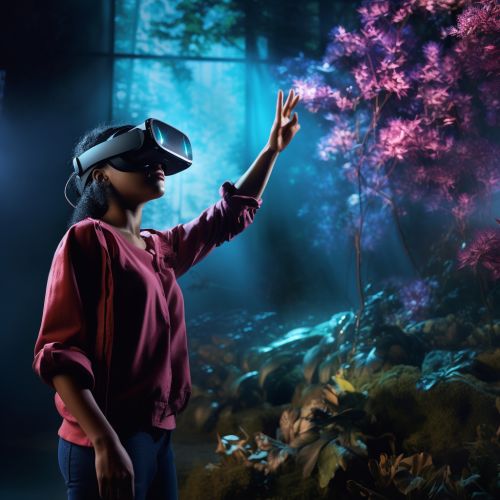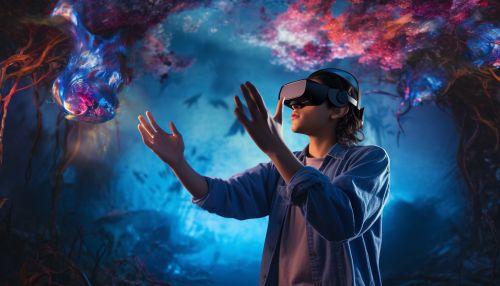The Science of Virtual Reality and Human Perception
Introduction
Virtual reality (VR) is a computer-simulated environment that can simulate physical presence in places in the real world or imagined worlds. Virtual reality can recreate sensory experiences, which can include sight, touch, hearing, and, less commonly, smell. Most current virtual reality environments are primarily visual experiences, displayed either on a computer screen or through special stereoscopic displays, but some simulations include additional sensory information, such as sound through speakers or headphones. Some advanced, haptic systems now include tactile information, generally known as force feedback, in medical and gaming applications.


Human Perception and Virtual Reality
The human perceptual system is a complex network of senses that includes vision, hearing, touch, taste, and smell. The brain integrates these different sensory inputs to create our perception of the world. In the context of virtual reality, the goal is to create a simulated environment that can effectively 'trick' these senses into perceiving a virtual world as if it were real.
Vision
Vision is the most dominant sense in humans, and it is the primary sense that virtual reality systems aim to stimulate. The human visual system works by processing light that enters the eye, creating a mental image of the world. VR systems simulate this process by displaying stereoscopic images that create an illusion of depth and three-dimensionality.
Hearing
The auditory system is the second most important sensory system in the context of virtual reality. Spatial audio techniques are used in VR to give the impression of sound originating from any direction in the 3D space, enhancing the immersive experience.
Touch
Haptic technology is used in virtual reality to provide tactile and force feedback, simulating the sense of touch. This can range from simple vibrations to more complex force feedback systems that can simulate the feeling of holding objects, touching surfaces, or experiencing physical forces in the virtual world.
Virtual Reality Systems
Virtual reality systems can be classified into three main types: non-immersive, semi-immersive, and fully immersive. Each type provides a different level of immersion, based on how many senses they stimulate and how effectively they can 'trick' the human perceptual system.
Non-Immersive Systems
Non-immersive systems are the least immersive type of VR systems. They typically involve a standard computer and input devices such as a keyboard and mouse. The user views the virtual environment on a screen and interacts with it using the standard input devices.
Semi-Immersive Systems
Semi-immersive systems provide a higher level of immersion than non-immersive systems. They typically involve large projection screens or multiple monitors, and may include additional devices such as head tracking systems, gloves, or joysticks for more natural interaction with the virtual environment.
Fully Immersive Systems
Fully immersive systems provide the highest level of immersion. They typically involve a head-mounted display (HMD) that provides stereoscopic displays for each eye, headphones for spatial audio, and a variety of devices for tracking the user's movements and providing haptic feedback.
Challenges in Virtual Reality
Creating a convincing virtual reality experience is a complex task that involves many challenges. These challenges can be broadly classified into technical challenges and perceptual challenges.
Technical Challenges
Technical challenges in virtual reality include creating realistic graphics and sound, providing low-latency feedback, and developing accurate tracking systems. Additionally, there are challenges related to the design and ergonomics of VR devices, as well as issues related to cost and accessibility.
Perceptual Challenges
Perceptual challenges in virtual reality relate to the difficulty of 'tricking' the human perceptual system. This includes issues related to spatial perception and presence, motion sickness, and the uncanny valley effect, where almost-but-not-quite realistic avatars or environments can feel eerie or unsettling.
Future of Virtual Reality
The future of virtual reality is likely to involve continued improvements in the realism and immersion of VR experiences, as well as increased accessibility and affordability of VR technology. There is also potential for VR to be used in a wider range of applications, beyond its current primary uses in gaming and entertainment.
